3625 results for «623»
3625 results
New evidence in the PFO closure
21 May 2025 – From EuroPCR 2025
Gain new insights into patent foramen ovale (PFO) closure with this session exploring age-related outcomes, risk of atrial arrhythmia, and patient selection improvements. Review various imaging approaches for assessing residual shunts and compare guidance techniques including TEE, fluoroscopy, and intracardiac echo from recent clinical registries.
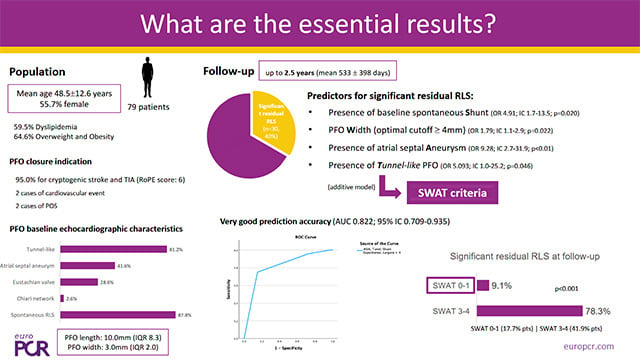
More on long-term responsiveness and effectiveness of renal denervation
21 May 2025 – From EuroPCR 2025
This session presents comprehensive data on the long-term responsiveness and effectiveness of renal denervation. Topics include outcomes in patients with chronic kidney disease, arterial stiffness correlations, safety profiles over nine years, and economic evaluations across European healthcare systems.
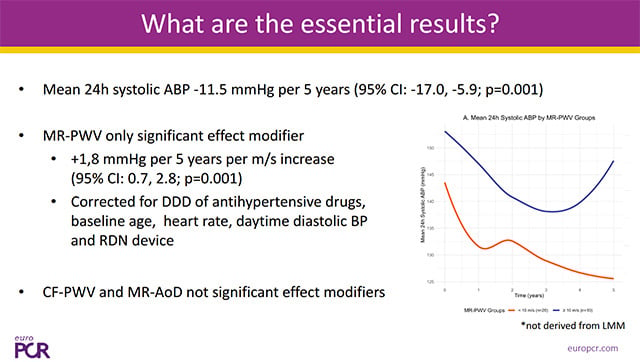
Complex multivessel disease - LIVE Case
21 May 2025 – From EuroPCR 2025
An 89-year-old male patient presented with stable angina, preserved LV function and some risk factors such as hypertension and diabetes. CT scan and angiography revealed occlusion of proximal RCA and bifurcation lesions on LAD and circumflex (medina 1,1,1). Operators treated the bifurcation lesions with provisional stenting.
Regarding...
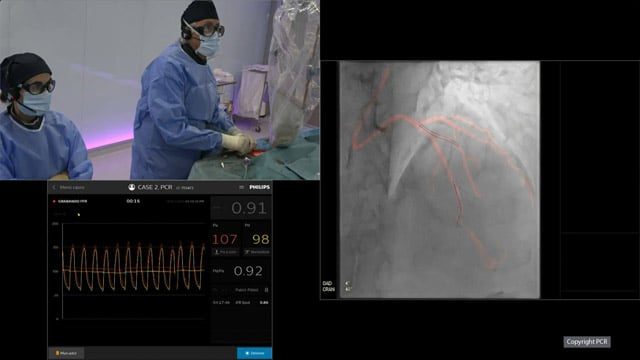
LAA closure and anthrombotic therapies
21 May 2025 – From EuroPCR 2025
Explore contemporary evidence on left atrial appendage (LAA) closure and associated antithrombotic therapies. This session covers strategies for antithrombotic de-escalation, efficacy and safety in patients with anticoagulation contraindications, breakthrough stroke etiology, and anatomical considerations in high-risk atrial fibrillation patients undergoing ablation.

Which valve is best for my patient?
21 May 2025 – From EuroPCR 2025
This session guides clinicians in selecting the most appropriate transcatheter aortic valve tailored to individual patient characteristics. Through diverse case discussions, including patients with coronary artery disease, small anatomies, bicuspid valves, and surgical bioprostheses, it elucidates decision-making processes and planning for complex TAVI anatomies.

Coronary scaffolds: new developments and applications
21 May 2025 – From EuroPCR 2025
Stay informed on advancements in coronary scaffolds with this session reviewing new developments and applications. Topics include comparative performance of magnesium-based bioresorbable stents, long-term clinical outcomes from the BIOMAG-I and FANTOM BRS studies, and real-world experiences with next-generation thin-strut scaffolds.
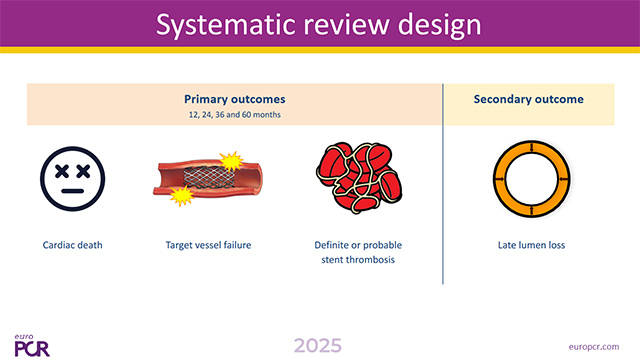
Mitral TEER in challenging scenarios - Part 2
21 May 2025 – From EuroPCR 2025
This session focuses on challenging scenarios encountered during mitral transcatheter edge-to-edge repair (TEER). Learn about management of complications such as haemolysis, device malfunctions, and complex vascular access issues, supported by instructive case presentations including bailout strategies in cardiogenic shock and infective endocarditis.

Current DCB practice: from lesion preparation to follow-up
21 May 2025 – From EuroPCR 2025
Explore current best practices in drug-coated balloon (DCB) angioplasty from lesion preparation to follow-up. This session discusses common indications, management of dissections and complications, and shares practical tips and case examples, equipping clinicians with comprehensive knowledge to optimize DCB use in contemporary PCI.
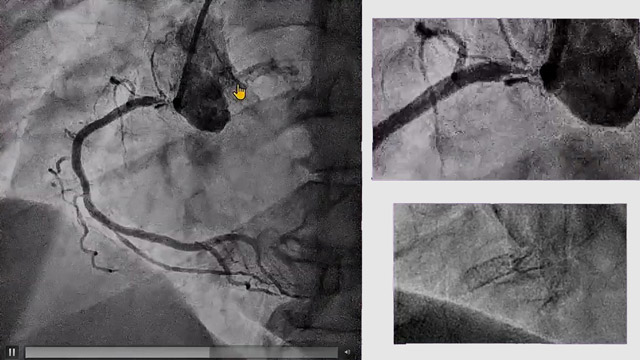
Imaging-based strategies for complication management in STEMI
21 May 2025 – From EuroPCR 2025
Discover imaging-based strategies to manage complications during STEMI interventions. This session discusses diagnostic clues such as spasm, stuck devices, and slow flow, and illustrates complex scenarios including extreme stent challenges and application of CTO techniques to STEMI cases for optimized outcomes.

TAVI for asymptomatic aortic stenosis after EARLY TAVI - TAVI and coronary artery disease after NOTION-3
21 May 2025 – From EuroPCR 2025
Critically assess the clinical implications of the EARLY TAVI and NOTION-3 trials with a focus on asymptomatic aortic stenosis and concomitant coronary artery disease. This session integrates recent evidence into patient-centered care pathways, offering case-based insights for optimizing timing and management strategies in TAVI patients.
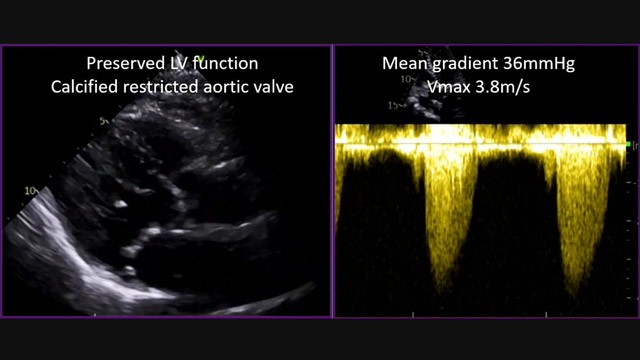
Complication management during mitral TEER procedures
21 May 2025 – From EuroPCR 2025
Explore complex case scenarios of complication management during mitral TEER procedures. This session covers haemodynamic challenges, thrombotic events, device malfunctions, and rare embolisation incidents, providing practical insights into effective bailout techniques and procedural problem-solving.

TAVI for aortic regurgitation: on-label and off-label use
21 May 2025 – From EuroPCR 2025
This session reviews on-label and off-label applications of transcatheter aortic valve implantation (TAVI) for treating aortic regurgitation. Examine complex cases including TAVI in patients with aortic dissection, cardiogenic shock, and valve-in-valve interventions, highlighting innovative procedural approaches and bailout strategies.

How are we going to treat these sick patients presenting with pulmonary embolism?
21 May 2025 – From EuroPCR 2025
Address the urgent clinical question of how to treat patients presenting with pulmonary embolism across varying risk profiles. This session covers risk stratification and discusses interventional treatment options through detailed case analyses of intermediate and high-risk patients, providing practical guidance for individualized management.

TAVI in challenging anatomical situations
21 May 2025 – From EuroPCR 2025
Delve into the latest advancements in TAVI for challenging anatomical situations. This session features insights from the NORTHOSTAVI registry, transcaval TAVI experiences, early discharge protocols following alternative access, and the application of intravascular lithotripsy to enable safe transfemoral valve replacement.

Chronic coronary syndrome with low ejection fraction and left ventricle support
21 May 2025 – From EuroPCR 2025
This session examines the management of chronic coronary syndrome in patients with low ejection fraction, emphasizing the role of left ventricular support. Topics include risks of intracoronary imaging, pharmacological facilitation, mechanical circulatory support, and alternatives like LAVA-ECMO.
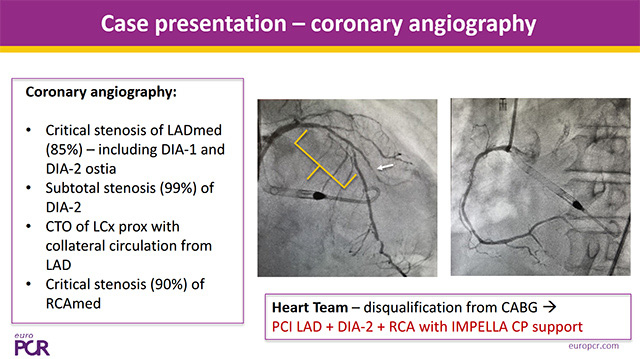
Transcatheter tricuspid valve replacement in the real world: current data and outcomes
21 May 2025 – From EuroPCR 2025
Explore current real-world data and outcomes of transcatheter tricuspid valve replacement (TTVR). This session reviews UK single-centre experiences, registry data, long-term right ventricular remodeling effects, safety in pacemaker patients, and AI-based CT screening for patient selection.
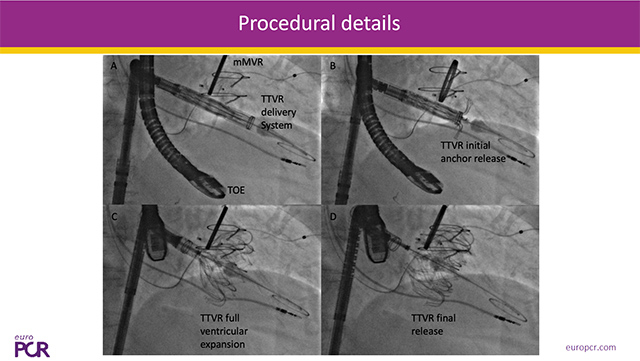
Coronary dissection : when imaging makes the difference
21 May 2025 – From EuroPCR 2025
Explore the critical role of intracoronary imaging in diagnosing and managing coronary dissections and related complications. Through case studies, learn about bailout strategies and the domino effect of decisions during PCI in acute myocardial infarction.
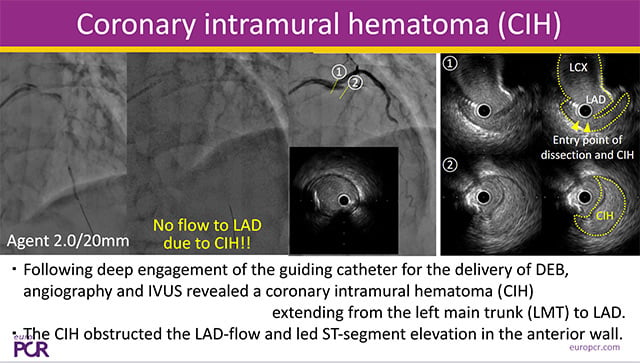
Enhancing knowledge in diagnosis ANOCA
21 May 2025 – From EuroPCR 2025
Enhance your understanding of the diagnosis of ANOCA through advanced diagnostic techniques. Topics include coronary endothelial function assessment, exercise stress testing for microvascular dysfunction, acetylcholine-induced coronary responses, and the clinical implications of myocardial bridge in provocative testing.

Challenging scenarios in the pulmonary system - Part 1
21 May 2025 – From EuroPCR 2025
This session presents challenging pulmonary system cases including high-risk and intermediate-high risk pulmonary embolism, complex congenital heart disease, and rare cardiac conditions. Understand critical management strategies for these uncommon but urgent scenarios.
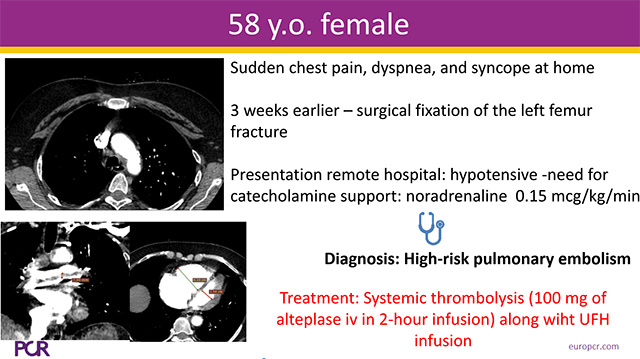
My worst PCI complication: how did I treat and could I have prevented it?
21 May 2025 – From EuroPCR 2025
Learn practical strategies to manage life-threatening PCI complications through real case studies. This session highlights techniques and devices employed to overcome complications, preventive measures, and safe outcome optimization during complex interventions.



